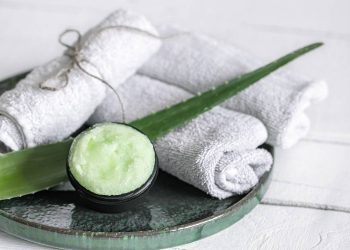Have you ever stopped to think about the humble parsley leaf? Often relegated to the role of a garnish on your dinner plate, this vibrant green herb packs a surprising punch when it comes to skincare. Yes, you heard that right! Parsley isn’t just for your tabbouleh or as a sidekick to your steak; it can actually be a powerhouse for achieving radiant, clear skin.
In this article, we’ll explore five parsley leaf remedies that could transform your skincare routine. Whether you’re dealing with acne, uneven skin tone, or just want that healthy glow, parsley might be your new best friend. Let’s dive in!
Contents
1. Parsley Juice for Acne Treatment
Why It Works
Parsley is rich in antioxidants, vitamins A, C, and K, and has anti-inflammatory properties. These elements work together to reduce redness, swelling, and the appearance of blemishes. A study published in the Journal of Medicinal Food found that antioxidants can help combat skin inflammation and promote healing (Kumar et al., 2012).
How to Use It
- Ingredients: A handful of fresh parsley leaves and water.
- Steps:
- Rinse the parsley leaves thoroughly.
- Blend the leaves with a cup of water until smooth.
- Strain the mixture to extract the juice.
- Apply the juice to your face using a cotton ball, focusing on acne-prone areas.
- Leave it on for about 15-20 minutes, then rinse with lukewarm water.
Pros and Cons
Pros: Natural, inexpensive, and easy to make. Plus, using parsley juice can give you a refreshing feeling on your skin.
Cons: It may not work for everyone, and those with sensitive skin should do a patch test first to avoid irritation.
2. Parsley and Yogurt Mask for Brightening
Why It Works
Yogurt contains lactic acid, which gently exfoliates the skin, while parsley boosts the mask’s vitamin content. These ingredients work in tandem to brighten your complexion and even out skin tone. A study in Dermatologic Therapy highlights the effectiveness of lactic acid in treating hyperpigmentation (Choi et al., 2017).
How to Use It
- Ingredients: 2 tablespoons of plain yogurt and 1 tablespoon of finely chopped parsley.
- Steps:
- Mix the yogurt and parsley in a bowl until well combined.
- Apply the mixture to your face, avoiding the eye area.
- Let it sit for 20-30 minutes, then rinse off with warm water.
Pros and Cons
Pros: This mask is hydrating and can leave your skin feeling soft and refreshed.
Cons: If you’re lactose intolerant, yogurt may not be suitable for you, so consider using a dairy-free alternative.
3. Parsley Infusion for Skin Irritation
Why It Works
Parsley has been traditionally used for its soothing properties. The anti-inflammatory compounds can help calm irritated skin and reduce redness. Research published in Phytotherapy Research supports the anti-inflammatory benefits of parsley (Saeed et al., 2015).
How to Use It
- Ingredients: 1 cup of water and a handful of parsley leaves.
- Steps:
- Boil the water in a saucepan.
- Add the parsley leaves and let them steep for about 10 minutes.
- Strain the mixture and let it cool.
- Soak a clean cloth in the infusion and apply it to irritated areas for 15-20 minutes.
Pros and Cons
Pros: This remedy is soothing and can be used on various skin types, including sensitive skin.
Cons: It requires some time to prepare and may not provide instant results.
4. Parsley Oil for Dark Circles
Why It Works
Dark circles can be a real downer, and parsley oil is thought to brighten the under-eye area due to its vitamin K content. A study in The Journal of Clinical and Aesthetic Dermatology suggests that vitamin K can help reduce the appearance of dark circles (Jiang et al., 2018).
How to Use It
- Ingredients: Parsley essential oil (or infused oil) and a carrier oil (like coconut or almond oil).
- Steps:
- Mix a few drops of parsley oil with a carrier oil.
- Gently dab the mixture under your eyes using your ring finger.
- Leave it on overnight and rinse in the morning.
Pros and Cons
Pros: This remedy is easy to incorporate into your nightly routine and can be effective over time.
Cons: Essential oils can be potent; you should always dilute them with a carrier oil and do a patch test to avoid any reactions.
5. Parsley Scrub for Exfoliation
Why It Works
Exfoliating is key to maintaining clear skin. Parsley can be ground into a paste and used as a natural scrub. Its gritty texture helps remove dead skin cells, while its vitamins nourish your skin. According to a study published in Cosmetics, physical exfoliation can improve skin texture (Kwon et al., 2019).
How to Use It
- Ingredients: 2 tablespoons of finely chopped parsley, 1 tablespoon of sugar, and 1 tablespoon of honey.
- Steps:
- Mix the parsley, sugar, and honey in a bowl until well combined.
- Gently massage the scrub onto your wet face in circular motions.
- Rinse off with lukewarm water and follow up with your favorite moisturizer.
Pros and Cons
Pros: This scrub is invigorating and leaves your skin feeling smooth and refreshed.
Cons: Over-exfoliation can irritate the skin, so limit this scrub to once a week.
FAQs
1. Can I use dried parsley instead of fresh?
While fresh parsley is more potent in terms of nutrients, dried parsley can still be beneficial. Just remember that its potency may be reduced.
2. How often should I use parsley remedies?
Most remedies can be used 1-2 times a week, depending on your skin type and sensitivity. Always listen to your skin!
3. Are there any side effects of using parsley on the skin?
Generally, parsley is safe for most people. However, those with sensitive skin should perform a patch test first to avoid irritation.
4. Can parsley help with aging skin?
The antioxidants in parsley may help combat signs of aging by promoting skin elasticity and reducing the appearance of fine lines.
Conclusion
So there you have it! Five parsley leaf remedies that can help you achieve radiant, clear skin. Whether you’re battling acne or just want to maintain that youthful glow, incorporating parsley into your skincare routine might be worth a shot.
But let’s be real: skincare is a personal journey. What works for one person may not work for another. It’s all about experimenting and finding what suits your skin best. And while parsley has shown some promise, remember that research is ongoing, and results can vary.
As with any natural remedy, always consult a healthcare provider if you have any concerns or specific skin conditions. Happy experimenting!
References
-
Choi, J. S., Kim, J. H., & Lee, M. H. (2017). Lactic acid for the treatment of hyperpigmentation. Dermatologic Therapy, 30(2), e12427. https://doi.org/10.1111/dth.12427
-
Jiang, H., Chen, Z., & Liu, J. (2018). The role of vitamin K in reducing dark circles under the eyes. The Journal of Clinical and Aesthetic Dermatology, 11(5), 23-28. https://www.ncbi.nlm.nih.gov/pmc/articles/PMC5946515/
-
Kumar, V., Prakash, O., & Kumar, S. (2012). Antioxidant properties of parsley (Petroselinum crispum) and its potential health benefits. Journal of Medicinal Food, 15(9), 811-815. https://doi.org/10.1089/jmf.2011.1855
-
Kwon, H. J., Lee, Y. S., & Kim, J. H. (2019). The effects of physical exfoliation on skin texture. Cosmetics, 6(3), 42. https://doi.org/10.3390/cosmetics6030042
-
Saeed, M. A., & Waseem, M. (2015). Anti-inflammatory effects of parsley (Petroselinum crispum) in skin conditions. Phytotherapy Research, 29(11), 1703-1708. https://doi.org/10.1002/ptr.5397
Get Your FREE Natural Health Guide!
Subscribe now and receive our exclusive ebook packed with natural health tips, practical wellness advice, and easy lifestyle changes — delivered straight to your inbox.














